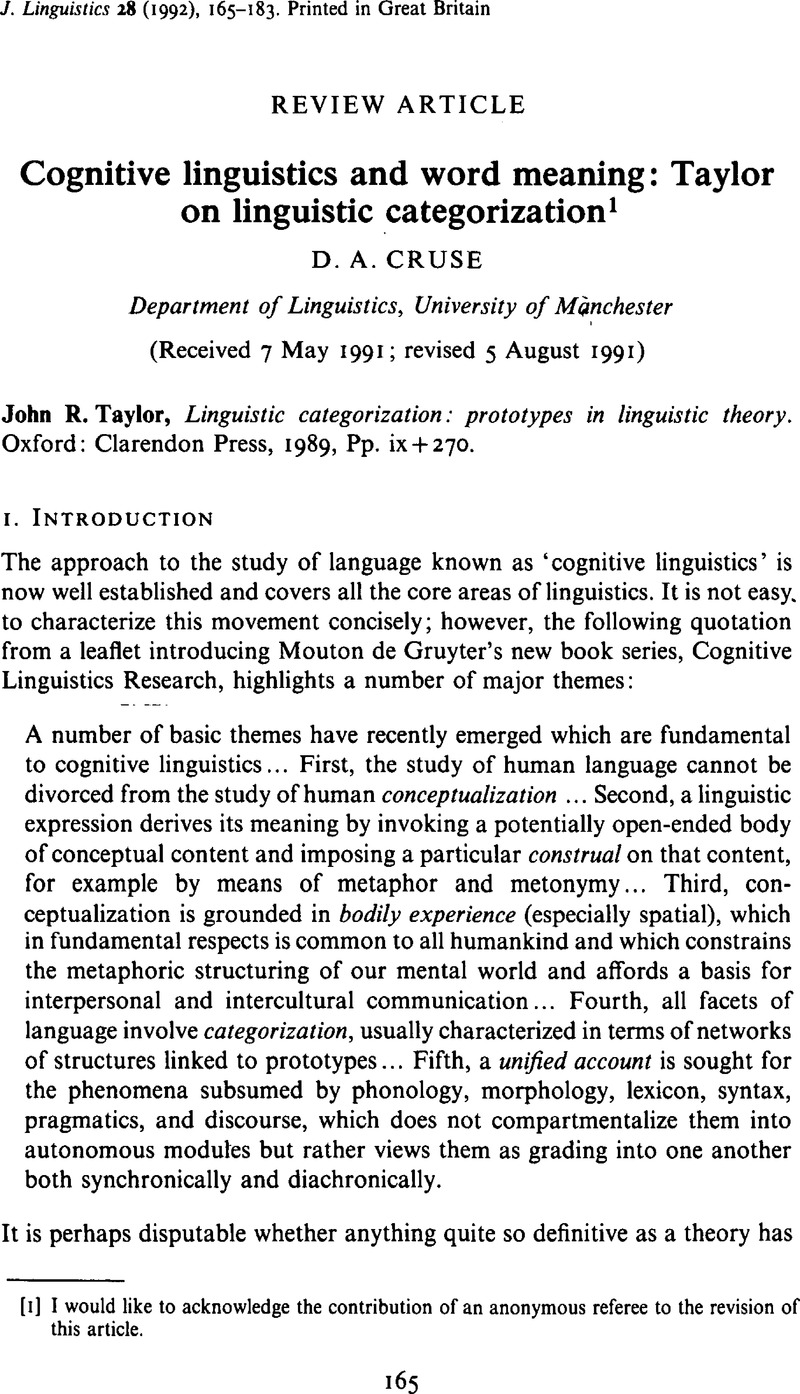Crossref Citations
This article has been cited by the following publications. This list is generated based on data provided by Crossref.
Clausner, Timothy C.
and
Croft, William
1999.
Domains and image schemas.
cogl,
Vol. 10,
Issue. 1,
p.
1.
Croft, William
2000.
Approaches to the Typology of Word Classes.
p.
65.
Newmeyer, Frederick J.
2000.
The Nature and Function of Syntatic Categories.
Vol. 32,
Issue. ,
p.
221.
Cruse, D. Alan
2002.
The Semantics of Relationships.
Vol. 3,
Issue. ,
p.
3.
Croft, William
and
Cruse, D. Alan
2004.
Cognitive Linguistics.
Aarts, Bas
2006.
Conceptions of categorization in the history of linguistics.
Language Sciences,
Vol. 28,
Issue. 4,
p.
361.
Ptashkin, Alexander
2020.
THE SEMANTIC CATEGORY OF ANOMALY IN THE NOVEL “THE MAN WHO MISTOOK HIS WIFE FOR A HAT” BY OLIVER SACKS.
Humanities & Social Sciences Reviews,
Vol. 8,
Issue. 2,
p.
205.
Gray, Kelsey M.
Namgyal, Dadul
Purcell, Jeremy
Samphel, Tsondue
Sonam, Tenzin
Tenzin, Karma
Tsering, Dawa
Worthman, Carol M.
and
Eisen, Arri
2020.
Found in Translation: Collaborative Contemplations of Tibetan Buddhism and Western Science.
Frontiers in Communication,
Vol. 4,
Issue. ,
Ptashkin, Alexander
2021.
The Category of Deviation in the Novel The Master and Margarita by Mikhail Bulgakov.
Sage Open,
Vol. 11,
Issue. 3,
Simon, Chipanda
and
M. Maunde, Regina
2024.
Sociolinguistics Stance of Language as the Pedestal for Gender Inequality in the Kurya of Tanzania.
EAST AFRICAN JOURNAL OF EDUCATION AND SOCIAL SCIENCES,
Vol. 4,
Issue. 5,
p.
53.



